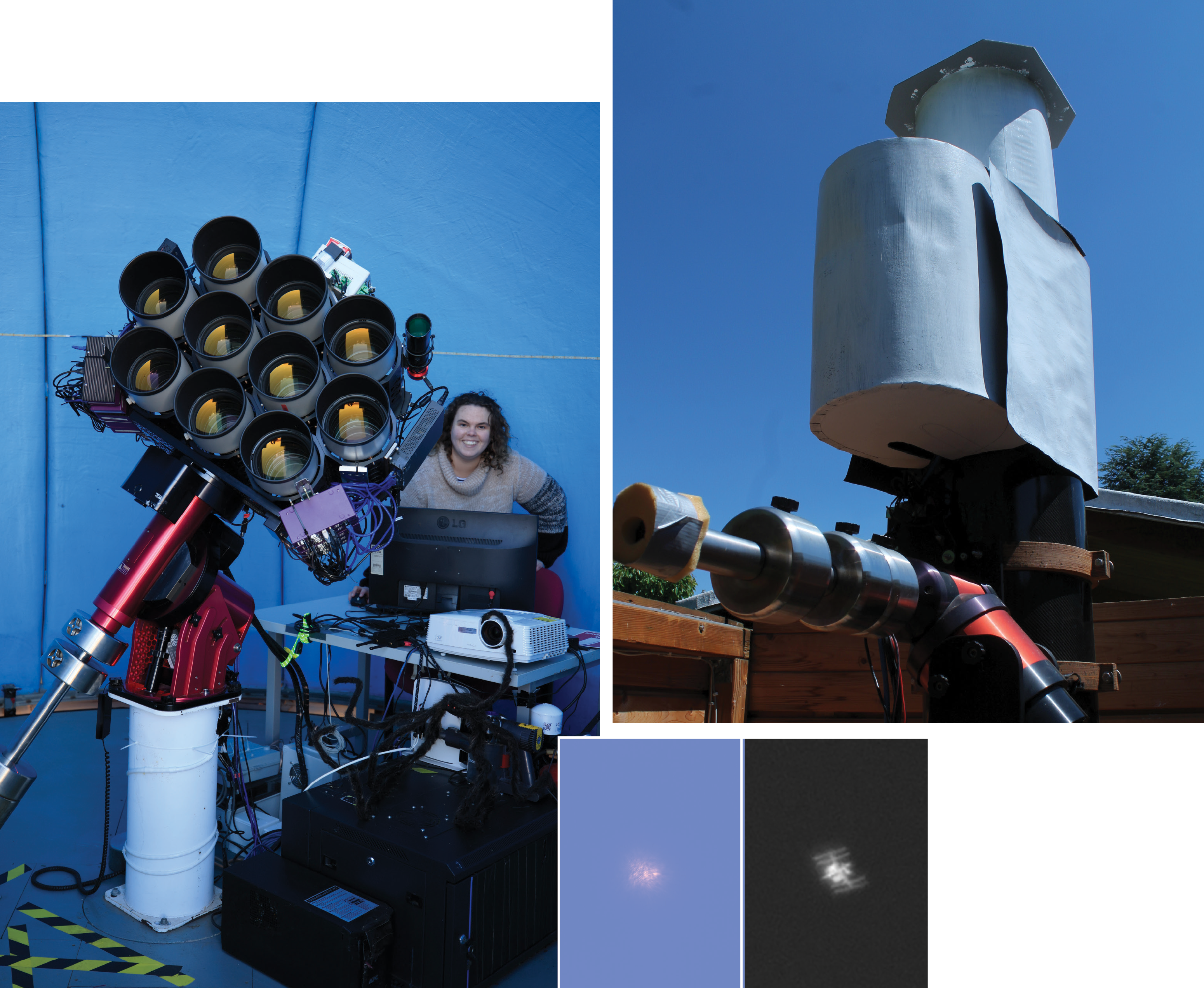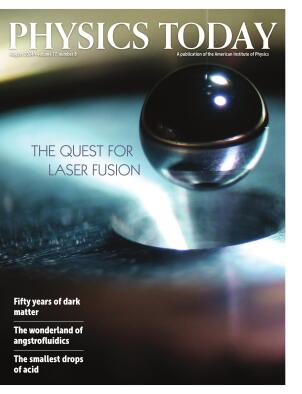Optical telescopes get rigged for daytime astronomy
DOI: 10.1063/pt.polm.xoyj
Astronomers want to study Betelgeuse continuously, but for a third of the year it’s too close to the Sun to see in the night sky. “The development of techniques to observe during daylight fills in gaps,” says Andrea Dupree, of the Center for Astrophysics | Harvard & Smithsonian, who studies the variable supergiant star.
Filling those gaps are Otmar Nickel, a retired medical physicist and astronomy hobbyist in Mainz, Germany, and Sarah Caddy, who is wrapping up her PhD at Macquarie University in Sydney, Australia. Over the past few years, they independently developed capabilities for daytime optical observation.
During daytime, seeing is hindered not only by the brightness of the Sun but also by the atmospheric turbulence created by changing temperatures. Another complication, says Lee Spitler, Caddy’s thesis adviser, is that “high-flying leaves and bugs can look like satellites.”
Nickel’s and Caddy’s setups rely on short exposure times and high acquisition rates. Taking many images improves the signal-to-noise ratio. They each imaged and made photometric measurements of Betelgeuse to test out their daytime telescopes.
Their data came in handy for Dupree. In late 2019 and early 2020, Betelgeuse underwent a historic dimming event. From a combination of space- and ground-based daytime and nighttime measurements, she and colleagues concluded that a huge chunk of Betelgeuse’s surface had detached. For centuries the star had pulsated with a 400-day period. Since losing about a quarter of its surface material, says Dupree, the star’s period is shorter and irregular. “It’s like an unbalanced washing machine,” she says. “It hasn’t recovered since losing material.”
With the year-round measurements made possible by daytime observations, says Dupree, astronomers “have been able to follow the recovery of the star’s surface layers.” That, coupled with hydrodynamic calculations, she says, led to understanding the cause of the ejection and the star’s subsequent dynamics. Those studies of Betelgeuse could also shine light on how other stars eject material.
In addition, Betelgeuse is predicted to go supernova sometime in the next million years. “Humans haven’t witnessed a galactic supernova in 400 years,” says Andy Howell, a senior staff scientist at Las Cumbres Observatory. “The daytime observations would be invaluable. We can’t afford to miss it.”
In astronomy, daytime optical observing has the greatest potential for studying bright stars that appear near the plane of the solar system, Spitler says, and possibly variable stars, comets, and other transients that can’t be viewed in the night sky because of their position relative to the Sun. Applications are niche, he says, “but they could still be important.”
Daytime optical observations could also be useful for tracking satellites and space debris.
Fast cameras
Nickel uses a 10-inch telescope in his backyard in Mainz. Two years ago, he switched from a CCD camera to a high-speed camera with a CMOS detector. That technology, used in cell phones and other electronic cameras, has allowed him to increase his acquisition rate 50-fold to 10 images per second. An acknowledgement of his initial daytime imaging by a professional astronomer on the platform The Astronomer’s Telegram, Nickel says, encouraged him to do more.
Caddy’s interest in daytime imaging grew out of outreach she was doing at the local observatory. “I wanted to give kids the opportunity to look through a telescope during their visits,” she says, “but the outreach was often during the day, and they couldn’t see much.”
Caddy was part of the team that built the Huntsman Telescope at Siding Spring Observatory. The remotely controlled telescope has 10 lenses, each 400 mm in diameter, and is optimized for nighttime observations of objects with low surface brightness.
In her pursuit of optical daytime observations, Caddy used a single such lens and a CMOS acquisition system for higher frame rates. She used high-end, off-the-shelf, and donated parts. She estimates that the total cost of her test system was less than Aus$100 000 ($67 000). “It worked,” says Caddy. “We can see roughly 900 stars during the day.”
Both Nickel’s and Caddy’s setups work best when the rough location of the target is known. They calibrate the telescopes at night to know where to point during the day.

Sarah Caddy used a single 400 mm lens, like those in the Huntsman Telescope shown here, to make a daytime optical telescope. With it, she imaged and measured the brightness of the red supergiant star Betelgeuse (left inset), which is in the Orion constellation and is usually the 10th brightest nighttime star, and the International Space Station (right inset). Online, she discovered that retired medical physicist and amateur astronomer Otmar Nickel was making similar daytime observations with his backyard telescope (right).
CLOCKWISE FROM LEFT: CANON AUSTRALIA/OTMAR NICKEL/SARAH CADDY/SARAH CADDY

Satellites and space junk
Caddy says that daytime observing could be game-changing for space situational awareness, the characterization and tracking of near-Earth objects in space. To prevent collisions, which could knock out GPS, communications, and other orbiting infrastructure, it’s necessary to know where objects are in space at all times. Traditional optical tracking satellites can operate only during twilight, when the sky is dark but objects are still illuminated by the Sun. As space becomes more crowded with satellites and debris, Caddy says, daytime observations can “give us much more time to observe the rapidly increasing number of targets.”
Caddy says she was shocked when she first learned about the 2009 high-speed crash between two satellites, an active commercial communications satellite and a defunct Russian one. By observing at different wavelengths during the day, researchers could obtain orientation and composition of objects in addition to position and orbit, she says, and such information could potentially inform satellites to reroute to avoid collisions.
Daytime optical telescopes may become an important complement to radar tracking facilities to “help keep space safe for the next generation,” Caddy says. Companies and government agencies also monitor space objects; although they often share position information, says Spitler, they mostly keep other status details private.
Spitler says that the full Huntsman Telescope is almost ready to operate around the clock. It has CMOS detectors and filters of various wavelengths, but it still needs specialized software for daytime observations.
More about the Authors
Toni Feder. tfeder@aip.org

